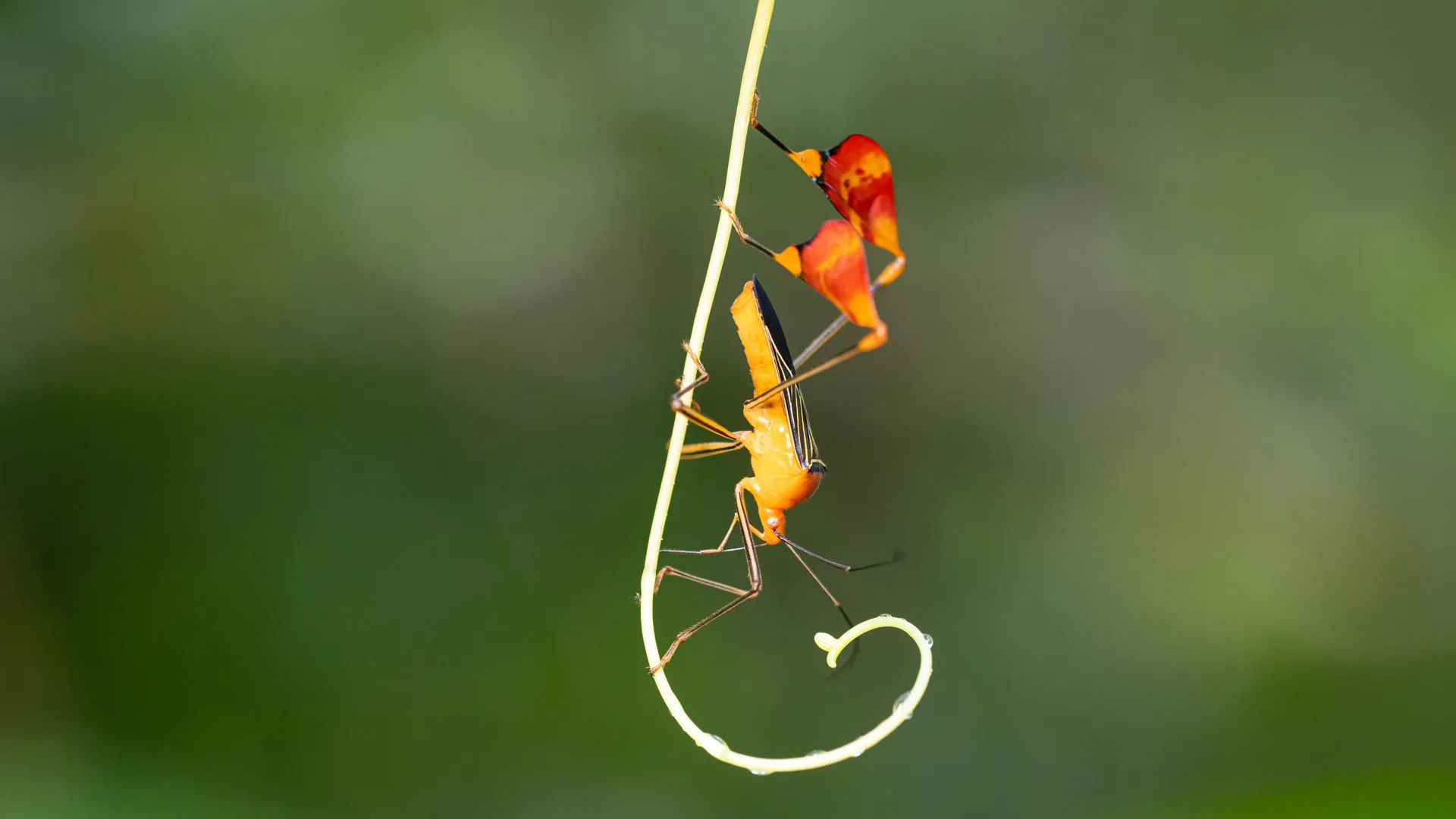What looks like dancing is actually a bug’s survival trick
- Date:
- October 4, 2025
- Source:
- Smithsonian Tropical Research Institute
- Summary:
- The matador bug’s flamboyant leg-waving puzzled scientists for years, with early guesses pointing to courtship. But experiments revealed the waving is a defense tactic against predators. Related species also share the behavior, possibly signaling toxicity or creating visual confusion. The discovery raises fresh questions about insect evolution and survival strategies.
- Share:

If you wander through Panama's lush forests, you might spot an insect that seems to wave at you. Scientists from the Smithsonian Tropical Research Institute (STRI) have spent years observing this eye-catching creature, known as the matador bug (Bitta alipes). Its bright red, flag-like hind legs move in a distinctive, rhythmic display. For a long time, no one knew why it performed this unusual behavior, but recent research has finally uncovered the answer.
Testing an Old Hypothesis
At first, researchers suspected the waving was related to mating. It seemed reasonable that males might signal to females to attract partners. However, experiments revealed something unexpected: both males and females waved their legs, and the behavior showed no connection to courtship or competition. This finding deepened the mystery -- if not for romance, why invest in such a conspicuous and energy-intensive display?
A new study in Current Zoology by STRI researchers Connor Evans-Blake, Juliette Rubin, and Ummat Somjee found that the leg-waving serves as a defense mechanism. Rather than luring mates, these colorful movements appear to scare off predators. The team tested this idea by placing matador bugs near two types of arthropods: predatory praying mantids and harmless katydids. Over the course of the experiment, they documented nearly 3,000 waves. When mantids were nearby, the bugs increased their leg-waving sevenfold, but they barely reacted to the katydids. Even more revealing, mantids never attacked the bugs that were actively waving.
An Anti-Predator Strategy Across Species
These results show that the waving display acts as a specific response to danger. To see if related species behave the same way, the researchers observed other flag-legged insects in Panama and examined videos online. They discovered at least five additional species that use similar displays, suggesting this leg-waving strategy may be widespread among plant-feeding insects.
All of these flag-waving species feed on passionflower vines, which contain toxins. The insects might be advertising their own chemical defenses with their vivid movements. Still, the exact reason the waving works remains uncertain. Does it signal toxicity to potential predators, confuse their vision, or simply make the bugs seem larger and more threatening?
"We're left with more questions than answers," said senior author Ummat Somjee. "But that's the beauty of studying insects -- there are hundreds of thousands of species, most of them completely unstudied, and every time we look closely we uncover behaviors that change the way we think about evolution."
Why These Discoveries Matter
Research like this extends beyond explaining a curious quirk of insect life. Insects represent most of the planet's biodiversity and play vital roles in ecosystems worldwide, yet their behaviors remain largely unknown. Understanding how they defend themselves offers valuable insight into how animals evolve, adapt, and diversify into the many astonishing forms that shape life on Earth.
Story Source:
Materials provided by Smithsonian Tropical Research Institute. Note: Content may be edited for style and length.
Journal Reference:
- Connor Evans-Blake, Juliette J Rubin, Ummat Somjee. Flag-waving behavior in matador bugs is an antipredatory strategy. Current Zoology, 2025; DOI: 10.1093/cz/zoaf047
Cite This Page: